
Nets of Hyphae
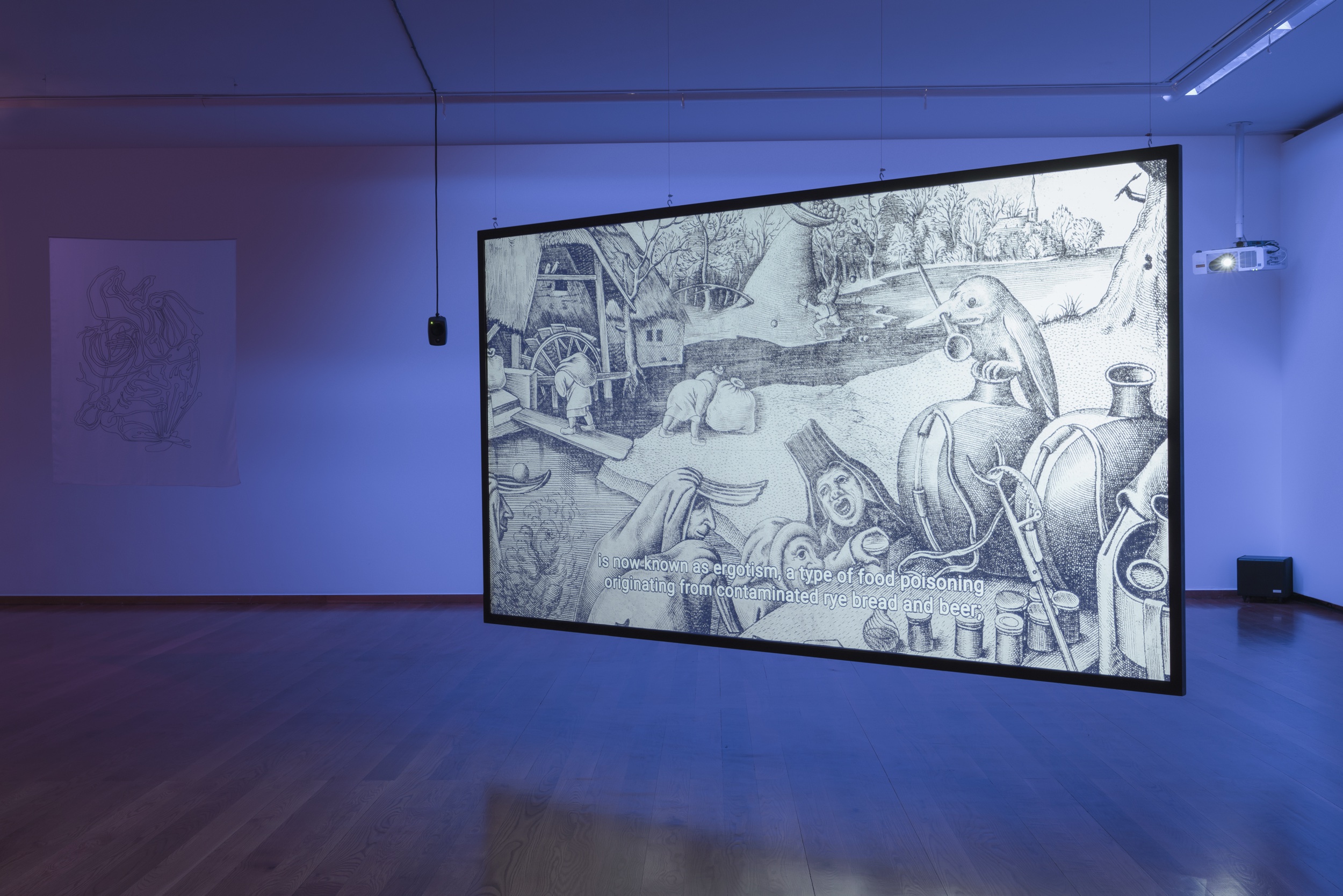




The Oracle (2020), video still. HD film, 16:9, color, no sound, 12'28" (in loop).

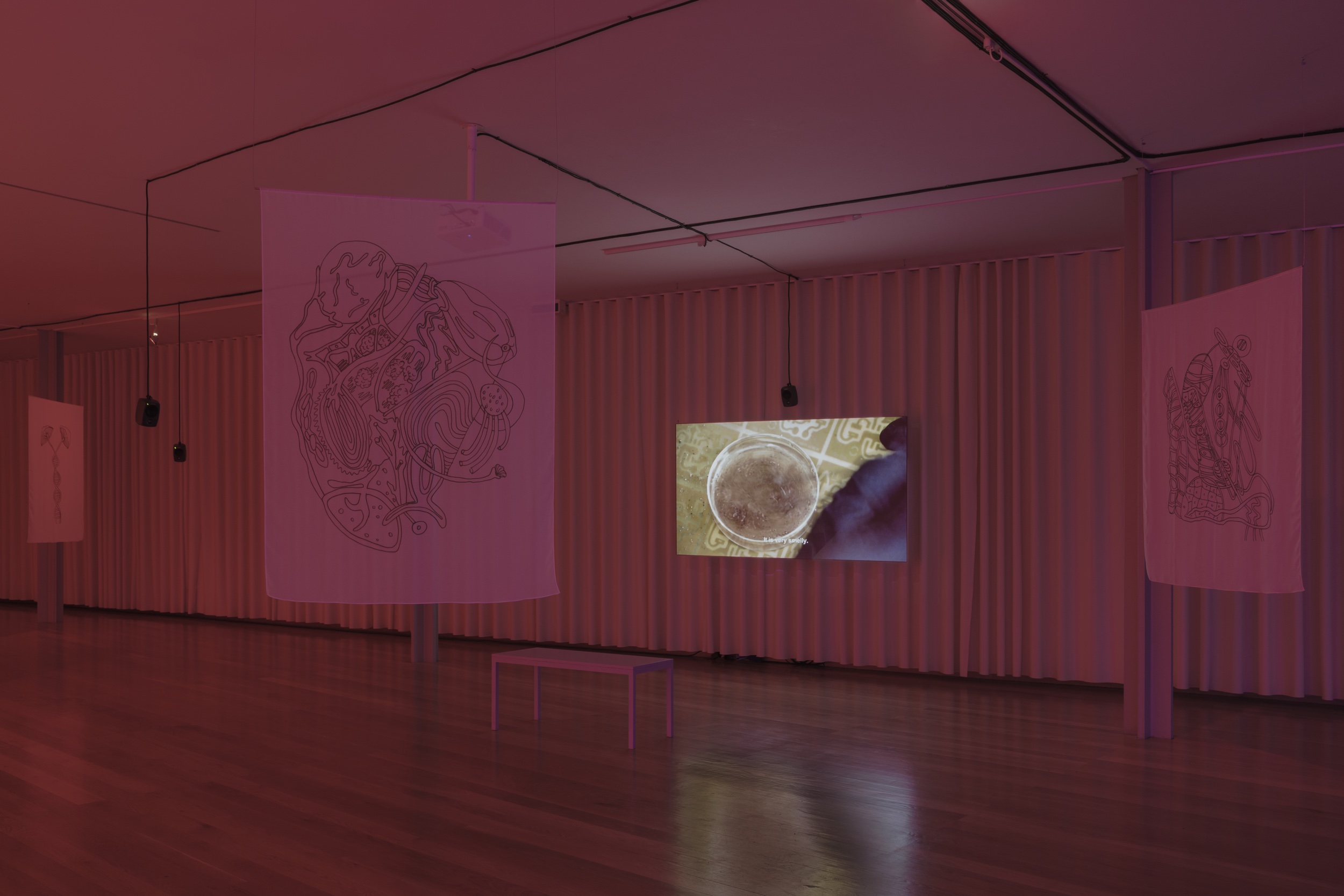
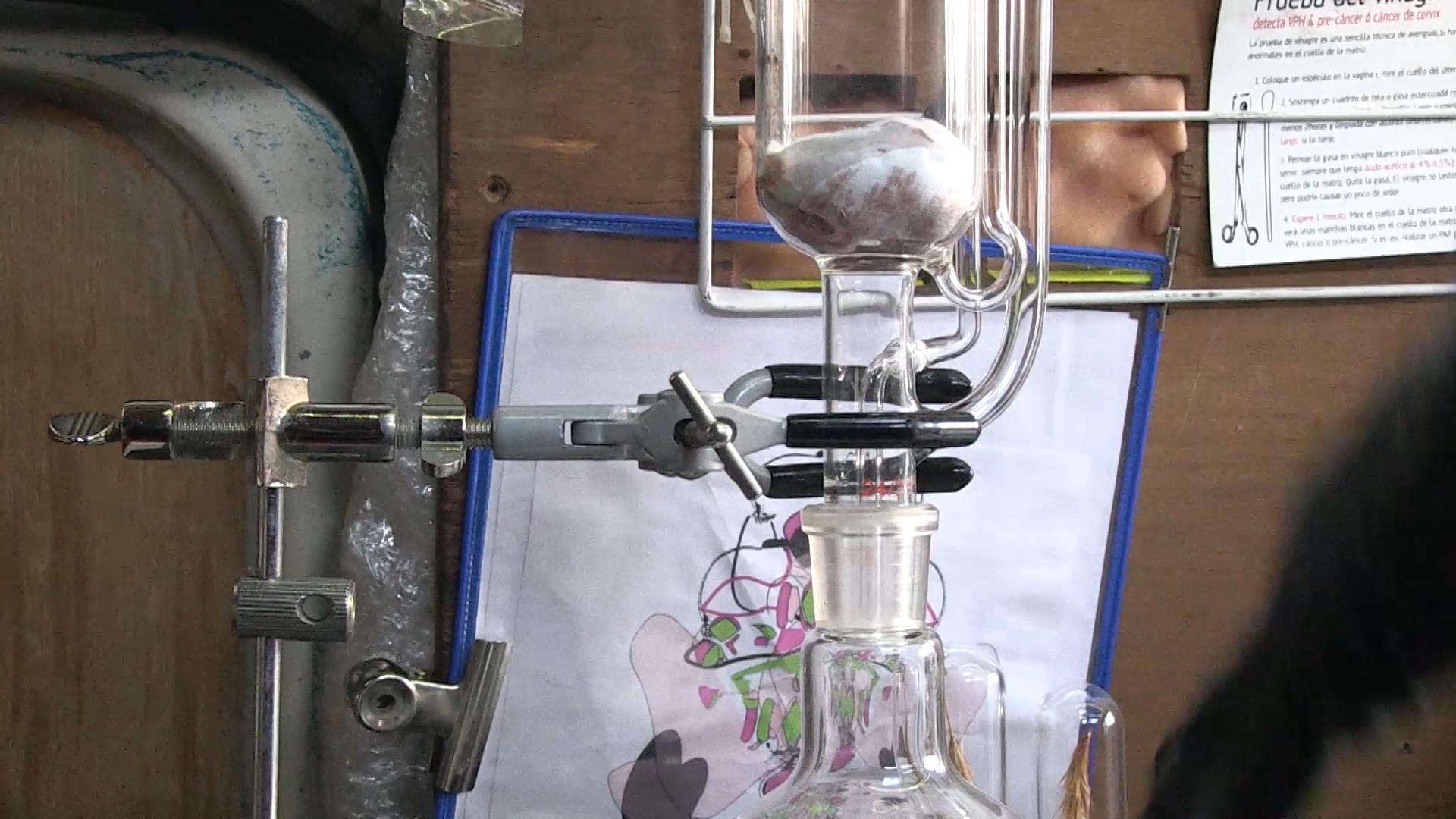

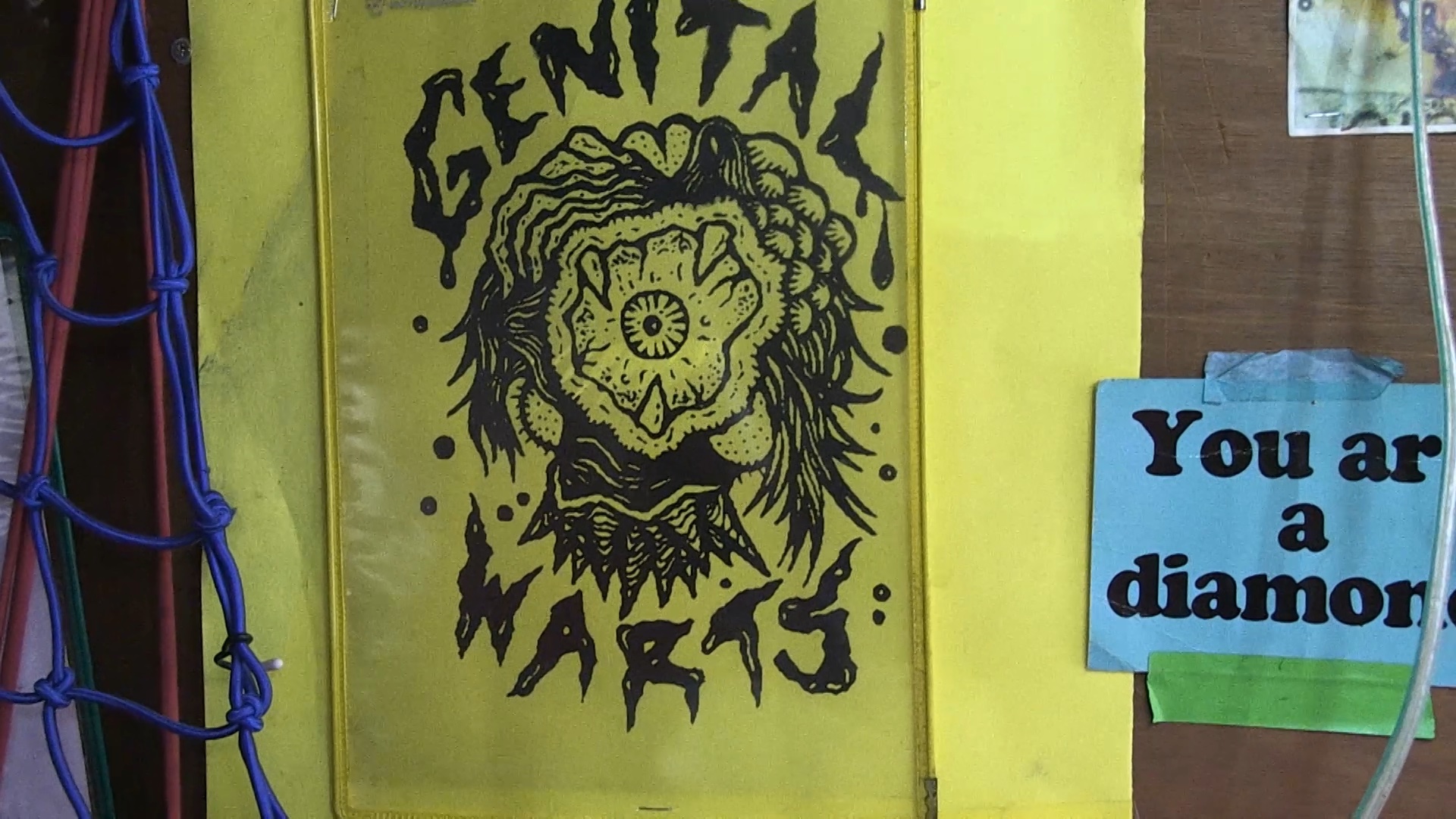
Cyanovan (Protocol), 2020, HD video, color, sound, 10'56''(in loop)
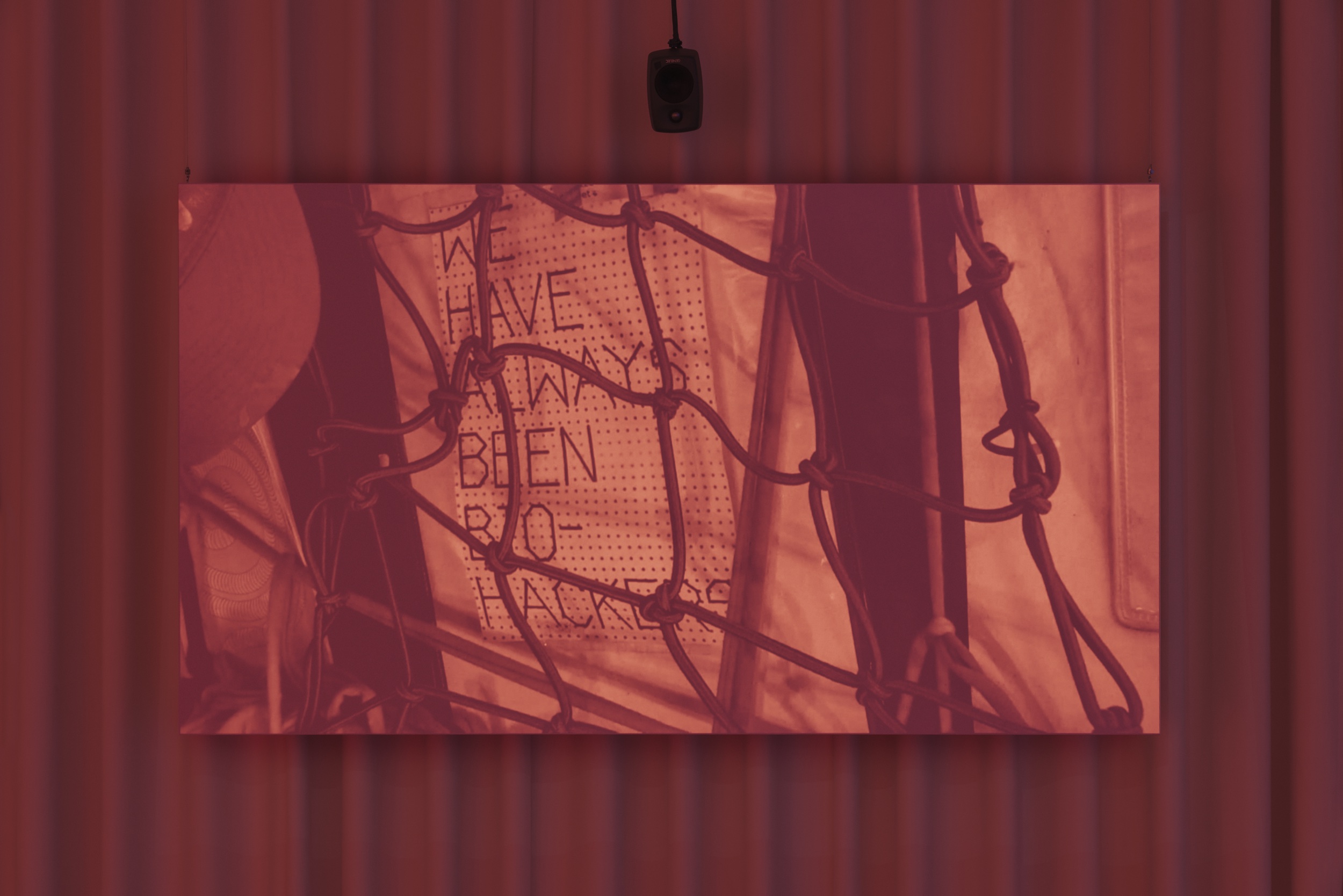




Infected Ear (2020), HD digital animation, video still, color, 8' (in loop)


Bodies We Care For (2020), print on fabric, numbered series 1-10, 150 x 106 cm

Bosch's Garden (2020), digital animation, color, sound, 6'55''(in loop)
Installation view.


The publication Diana Policarpo - Nets of Hyphae (2021). Ed. Stefanie Hessler
Design by João M. Machado
Co-published by Galeria Municipal do Porto, Kunsthall Trondheim and Mousse Publishing, and with support from the Arts Council Norway
Convulsions, hallucinations, burning sensations. Diana Policarpo’s exhibition Nets of Hyphae [1] takes the ergot mushroom as its point of departure. The parasite infects rye plants and is believed to be the cause of the St. Anthony’s fire disease, inducing burning and tingling sensations, muscle spasms, hallucinations, and even gangrene in humans. Women have traditionally used small doses of ergot for abortions and to treat bleeding after giving birth. However, the healers’ expertise—rooted in experience of the land and plants— has been eroded by the progress of patriarchal capitalism and replaced with obstetrics. [2]
With Nets of Hyphae, Policarpo continues her research into fungi networks, drawing speculative connections between ergot spores, reproductive justice, and alternative forms of knowledge. Co-commissioned by Kunsthall Trondheim and Galeria Municipal do Porto in Portugal, Policarpo’s videos, digital 3D animation, drawings printed on textiles, light intervention, and soundscape offer audiences a sensorial experience.
At a time when abortion rights are under threat in Poland, the United States, and other places, this exhibition connects health struggles dating back to the Renaissance with contemporary concerns about sexual and reproductive justice. These include the right to decide over one’s own body, access to abortion, and consideration of factors such as class, race, disability, and LGBTQ+ inclusion. Nets of Hyphae invites viewers to consider the relationships between precarity and resistance in the fungus cycle, the politics of sexual health, and the expertise of midwives, healers, and peasants.
1. The exhibition title Nets of Hyphae referes to the thin tissues that connect mushrooms underground and allow them to grow.
2. Obstetrics, together with gynecology, is the Western medical field concerned with pregnancy, birth, and the postnatal period.
Nets of Hyphae
Stefanie Hessler
Photo credits: Dinis Santos | Galeria Municipal do Porto